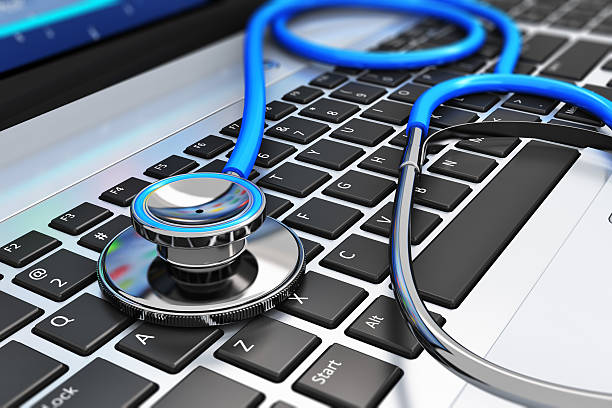Top Healthcare APIs and How Hackers Exploit Them
We’ve been on the front lines long enough to know that healthcare cybersecurity is no longer about just firewalls and antivirus software. The biggest risk now? APIs, the very tools meant to power better care.
At Gini, we work with digital health platforms across the country. And we’ve seen firsthand how cybersecurity in healthcare is being tested by APIs that were never meant to hold the weight of modern medicine.
Today, we want to help you understand what these APIs do, why they matter, and most importantly, how hackers exploit them. If you care about patient safety, system resilience, or cybersecurity healthcare compliance, this is for you.
What Are Healthcare APIs?
APIs, or Application Programming Interfaces, are the digital bridges that connect different healthcare systems. They allow apps, platforms, and devices to talk to each other.
Think about:
-
A mobile app that shows your lab results
-
A wearable that syncs vitals to your EHR
-
A pharmacy platform that communicates with your provider
-
Insurance systems that pull billing data in real time
All of these rely on healthcare APIs.
In short, APIs are critical to the healthcare sector’s efficiency, but they also open the door to cybersecurity threats in healthcare, especially when poorly secured or exposed to third-party access.
Top Healthcare APIs Used Today
Some of the most widely used APIs include:
-
FHIR (Fast Healthcare Interoperability Resources): Enables standardized sharing of medical data
-
EHR Platform APIs: Offered by systems like Epic, Cerner, and AthenaHealth
-
Claims & Billing APIs: Used for insurance, pre-authorizations, and payments
-
Remote Monitoring APIs: Sync data from wearables or at-home medical devices
-
Scheduling APIs: Bookings, reminders, and appointment follow-ups
-
Telehealth APIs: Secure video, messaging, and patient data access
-
Pharmacy APIs: Medication records, dosage updates, refill requests
Every one of these APIs moves sensitive data across systems and networks, and that’s where the risk begins.
How Hackers Exploit Healthcare APIs
Let’s walk through what we’ve seen on the ground. Here’s how cybercriminals use APIs as an attack surface:
1. Weak Authentication Controls
If an API doesn’t enforce strong identity verification, it’s like leaving your healthcare’s front door wide open. Hackers use bots to test credentials, exploit sessions, and extract patient records.
This is one of the most common cybersecurity issues in healthcare, and it’s entirely preventable.
At Gini, we help healthcare teams implement secure authentication and role-based access at the API level, not just the front end.
2. Excessive Permissions and Data Exposure
Many APIs return way more information than is needed. A pharmacy API might deliver entire patient histories when all it needed was a prescription list.
This creates what we call “overexposure risk.”
Cybersecurity threats in healthcare often start with excess data sitting in plain sight. We help teams tighten data scopes and limit what APIs can send, reducing the surface area hackers can target.
3. Insecure Endpoints and Lack of Encryption
If an API sends data without encryption, that data is vulnerable in transit.
We’ve seen attackers use packet sniffing tools to intercept API traffic between mobile apps and backend servers, stealing PHI without ever touching the EHR directly.
Our job at Gini is to close these gaps with end-to-end encryption and proper transport-layer security, because medical cybersecurity must protect every step of data transmission.
4. Broken Object-Level Authorization
Imagine a patient using a telehealth app, but due to a flawed API, they can view other patients’ records.
This isn’t theoretical, it’s real, and it’s one of the most dangerous cybersecurity risks in healthcare today.
Broken object-level authorization allows attackers to manipulate parameters and access data that doesn’t belong to them. Gini’s platform scans for these vulnerabilities and flags improper permissions before they become lawsuits.
5. No Rate Limiting or Bot Protection
Attackers love APIs with no traffic control. They launch brute-force login attempts or scrape millions of records in hours.
Cyberattacks in healthcare using API abuse don’t always look like traditional breaches. Often, they’re slow and invisible until it’s too late.
We implement real-time traffic monitoring and rate limiting to stop these threats before they get inside.
Why Healthcare APIs Are Prime Targets
Let’s be clear, hackers aren’t just guessing.
They know that APIs:
-
They are often exposed externally
-
Bypass traditional firewalls
-
Touch critical PHI
-
Have inconsistent security governance
-
Grow rapidly, without centralized tracking
And in healthcare, urgency rules. Systems get built fast. Integrations happen on the fly. But that’s also how emerging cybersecurity threats sneak in.
Our team at Gini steps in early during API planning and development to ensure every connection meets healthcare cybersecurity standards and fits into your overall cybersecurity strategy.
The Cost of Ignoring API Security
Here’s the part no one wants to talk about, until it happens.
A single exposed API can lead to:
-
PHI leaks and HIPAA violations
-
Patient lawsuits
-
Insurance claims rejections
-
Public trust erosion
-
Multi-million-dollar fines
We’ve seen cyber attacks on healthcare industry giants that started with a small developer tool or sandbox API.
This isn’t just an IT concern anymore. It’s a healthcare cybersecurity priority. It’s a necessity for a cybersecurity plan. And yes, it’s a frontline care issue.
How We Help at Gini
We partner with healthcare organizations to build, monitor, and protect their APIs from start to scale.
Here’s how we do it:
-
Full API risk audits
-
OWASP API Top 10 assessments
-
Live traffic monitoring
-
Authentication & authorization controls
-
Encryption at all endpoints
-
Dev team education
-
Compliance support for HIPAA, HITECH, and beyond
Most importantly, we customize our tools to fit your pace, your platforms, and your people. Because healthcare and cybersecurity should work together, not slow each other down.
Best Practices for Securing Healthcare APIs
To wrap things up, here are some of the healthcare cybersecurity best practices we recommend for any API-connected system:
-
Use OAuth 2.0 for secure access
-
Limit data returns to “least necessary”
-
Apply strict rate limiting
-
Log and audit all API requests
-
Encrypt data at rest and in transit
-
Run penetration tests quarterly
-
Document API inventory and access policies
When you implement these, you’re not just preventing breaches, you’re showing your patients that you value their safety, online and off.
Why We Built Gini
Because we were tired of watching good people get blindsided by bad code.
Because we believe the importance of cybersecurity in healthcare goes beyond the tech, it touches every life that walks through your doors.
We’ve built a team that understands what real, human-first cybersecurity for healthcare looks like. Not overcomplicated. Not expensive. Just smart, thoughtful protection that lets you focus on care.
Final Thoughts: Don’t Let APIs Become Your Weakest Link
APIs are powerful. But left unguarded, they become portals for disaster.
If you’re ready to secure the systems you rely on every day or if you don’t even know where your APIs are exposed, we’re here.
Let’s work together to bring your API security up to modern standards. Let’s make sure cybersecurity in health care isn’t just about compliance, it’s about confidence.
Because at Gini, we don’t just protect your data. We protect your mission.






